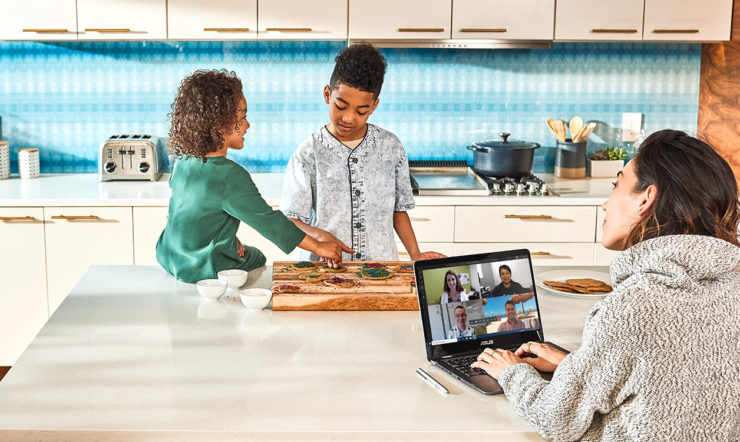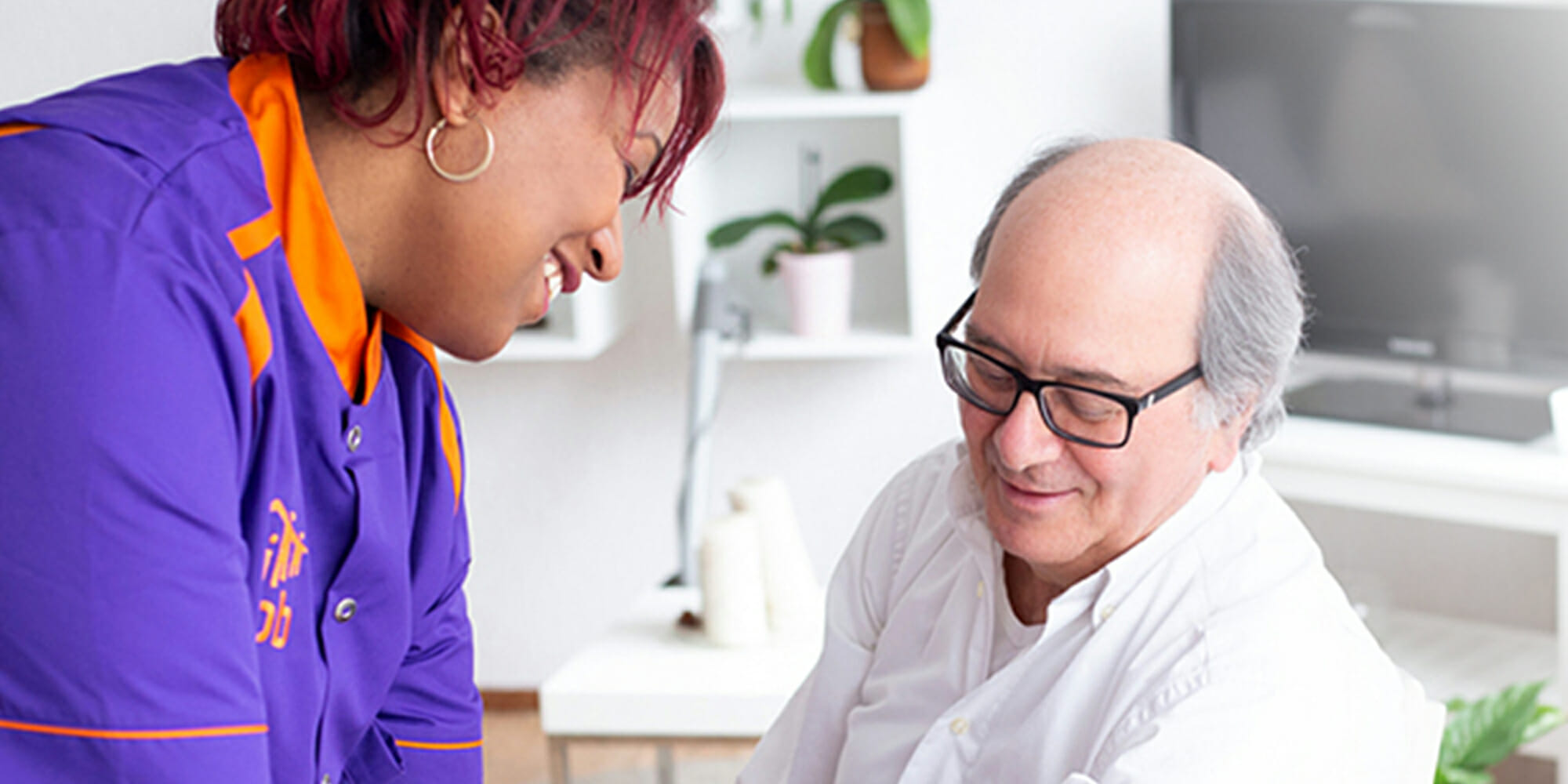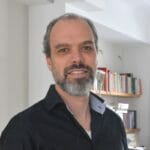
Remote work trend report: meetings
Designed to help business planning and innovation, this report from Microsoft’s Work Trend Index explores how people are learning to connect as a team.


Wouter Ouweneel
Azure Busines Lead — Windows Virtual Desktop
“Time is the most valuable currency in healthcare. That’s what this technology gives us: more time with our patients.”
Fettah Erdal, Senior Administrator at Dutch healthcare provider MOB is talking about the impact that cloud-based technology is having on his organization’s ability to deliver more patient-centred healthcare.
“All of our care workers are in the field,” Erdal says. “They don’t work from a central location or office, they are expected to operate more independently. And so they need the right technology to ensure they can spend as much of their time as possible focusing on patient needs.”
The focus on remote working and field delivery of healthcare services is one of several characteristics that distinguishes MOB within the healthcare sector in the Netherlands. It is a model that is proving to be incredibly successful, but with success comes an inevitable increase in demand, and MOB is an organization undergoing rapid and continuous expansion.
Ensuring that this expansion runs smoothly and that MOB’s team of field care workers have secure access to patient data from anywhere, as well as an easy-to-use interface that can accommodate the onboarding of staff members with varying degrees of technical knowhow, has led the organization to rethink its technical infrastructure.
With the support of Microsoft partner 3fifty, the team at MOB has migrated the organization’s on premises datacentre to the Azure cloud and implemented Azure Virtual Desktop across its network, giving its staff the technical support they need to deliver the best possible patient care.
When MOB was established in Rotterdam in the early 2000s, it had a clear goal: to support people from diverse cultural backgrounds to access healthcare services.
“The founder of MOB saw that there were a lot of different cultures in Rotterdam, and many of them didn’t know how to access traditional healthcare services, or to claim on healthcare insurance,” explains Ruud Verheul, Facility Manager at MOB. “So the first MOB services were set up to address that.”
Today, MOB provides culturally aware health and social care services to more than 2,300 patients. “We have more than 600 care providers delivering services in 12 different locations across the Netherlands,” says Verheul.
“We provide healthcare for people only at home, in their own environment, so it is always personalized and they feel more comfortable than having to visit a hospital,” he adds. “And 80% of our healthcare workers come from the same backgrounds as the people they are servicing, so again that makes the experience more personal, more culturally sensitive.”
It is extraordinary work. And what has quickly become apparent is that this type of personalized, culturally sensitive and remote healthcare service is in incredibly high demand. “That’s why this organization is growing so much,” says Verheul. “Because there is a need for this type of service all across the Netherlands, not just in and around Rotterdam.”
It soon became clear that the team at MOB needed support to manage their rapidly expanding services.
Microsoft partner 3fifty has been working closely with MOB during this period of expansion to help ensure the organization is able to continue to offer the best possible services to its clients.
“We noticed that MOB were struggling to keep up with their expansion,” says Sebastiaan Boonstoppel, Enterprise Architect at 3fifty. “They called me and said they had another 200 clients, another 200 employees. And then the next week another 100, the week after another 200.
“So they were expanding very rapidly and they had an on premises data center that was managed by a data center supplier,” Boonstoppel continues. “It was very pricey, in my opinion, and it was very old. So we got into talks about upgrading it. We discussed what their demands were, and what their growth expectation was. And that resulted in us planning the migration of their data center to Microsoft Azure, and centralizing all their network management in the Azure environment too.”
The result is a new environment that is capable of scaling up or down based on the demands of MOB’s employees. “If they grow, we can add an extra service, if they shrink, we can dismantle those services,” explains Boonstoppel. “That was our intention, to make the environment very secure, very flexible, and very scalable to accommodate the growth they are experiencing, while all the time respecting patient privacy.”
With so much of its workforce operating remotely and the main data infrastructure of the organization now hosted in the cloud, MOB started looking for a remote working desktop infrastructure that would support its nurses and social workers to deliver vital services in remote settings.
“We have 12 different locations and we need our people in all of those locations to have access to a centralized source of data, so they can best support our patients,” says Erdal. “Azure Virtual Desktop was the logical step.”
It is a solution that comes with a number of benefits. “All our employees can work remotely now,” Erdal says. “If they work from home, they can just click on a link on our website and have all the desktop functionality they need, as if they were at the office. If they are in the field then they can scan documents on their smartphones without having to go to an office.”
Ease of use is also critically important for MOB’s diverse workforce. “If you’re a care worker working in the field and you only need a single sign on to access multiple different applications and services, then that is a huge plus,” says Erdal. “And some of our care workers are only recruited the night before they deliver their first services, so they can be onboarded very easily with AVD, without even having to come into an office.”
Another key consideration is security and privacy, because the system needs to integrate patient data. “Microsoft has the security tooling needed for such an environment,” says Boonstoppel. “And it integrates with everything MOB is already using.”
“Our healthcare workers can access the electronic patient system from anywhere, on their smartphones,” adds Erdal. “So they are able to log their activities and if they need to create a letter or anything like that, then they can put it in the system for a follow-up action.
“It also enables our healthcare workers to use their smartphone to check things ahead of time,” he continues. “The night before a visit they can check what kind of medication the client needs. So they can access all sorts of data via their smartphones, and all securely.”
It is clear that the solutions MOB is using are already having an impact on the vital services it provides for its patients. “They have less paperwork and less need to come into the central offices, which means they can spend much more time with the patients.”
Similarly, the IT team at MOB suddenly find themselves with more time. “When we have an issue, we can now just log a ticket with 3fifty, rather than having to sort out the issue ourselves as we used to. That gives us much more time to focus on innovations and improvements.”
One such improvement focuses on adoption of the collaborative tools used by the company’s healthcare workers. “Microsoft Teams is also installed on the AVD environment,” says Erdal. “But not everyone is using it to its full potential. So the next phase for us is to help to increase adoption of Teams, to enhance collaboration between our teams.”
Even without such improvements, the success of MOB’s unique brand of healthcare provision looks set to continue to grow – a testament as much to the quality of the service, as to the need for it.
“We give vulnerable people the opportunity to independently participate in society,” says Erdal.
“By 2023, we will have six more MOB centres open across the Netherlands. And I think that the reason we are growing so fast is because of the need for this type of special care, which truly understands your background and your preferences, based on your cultural differences,” he adds.
“It is a huge inspiration for us to continue to do what we do.”